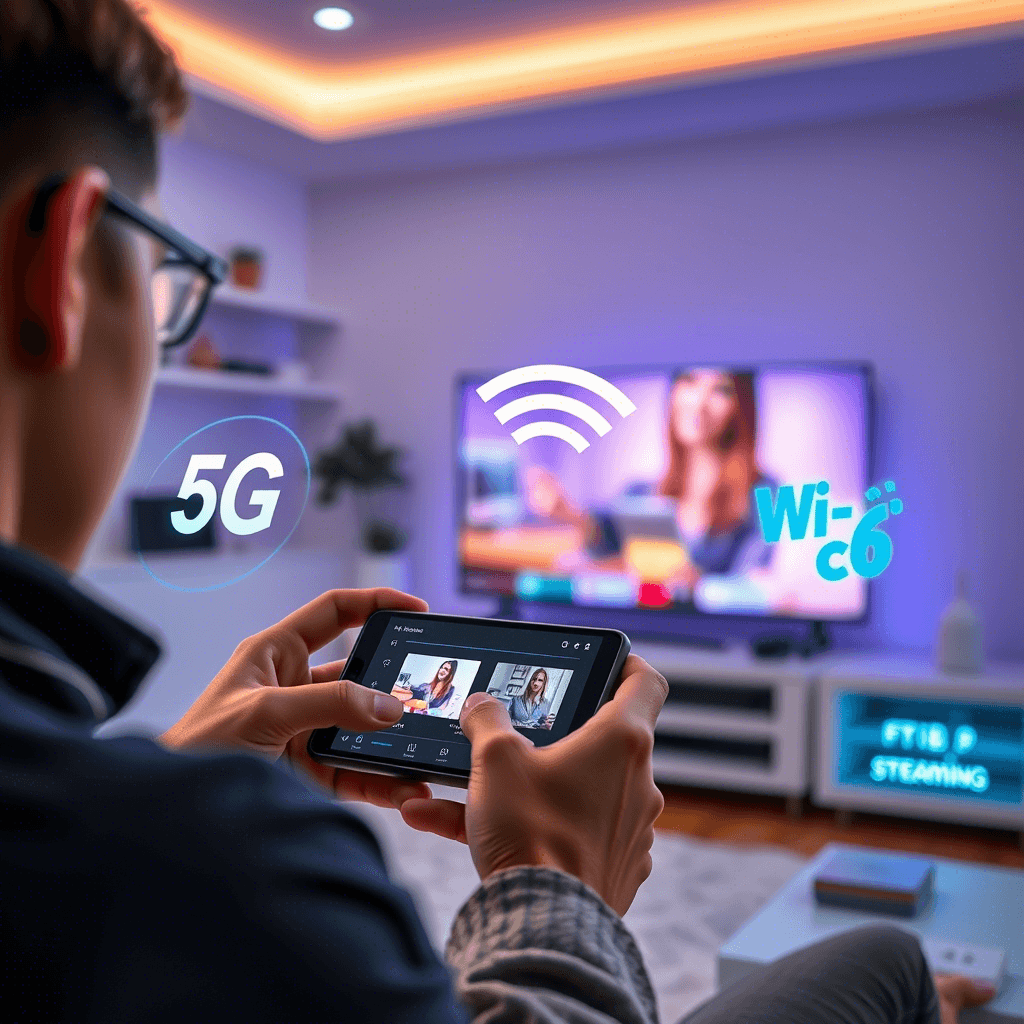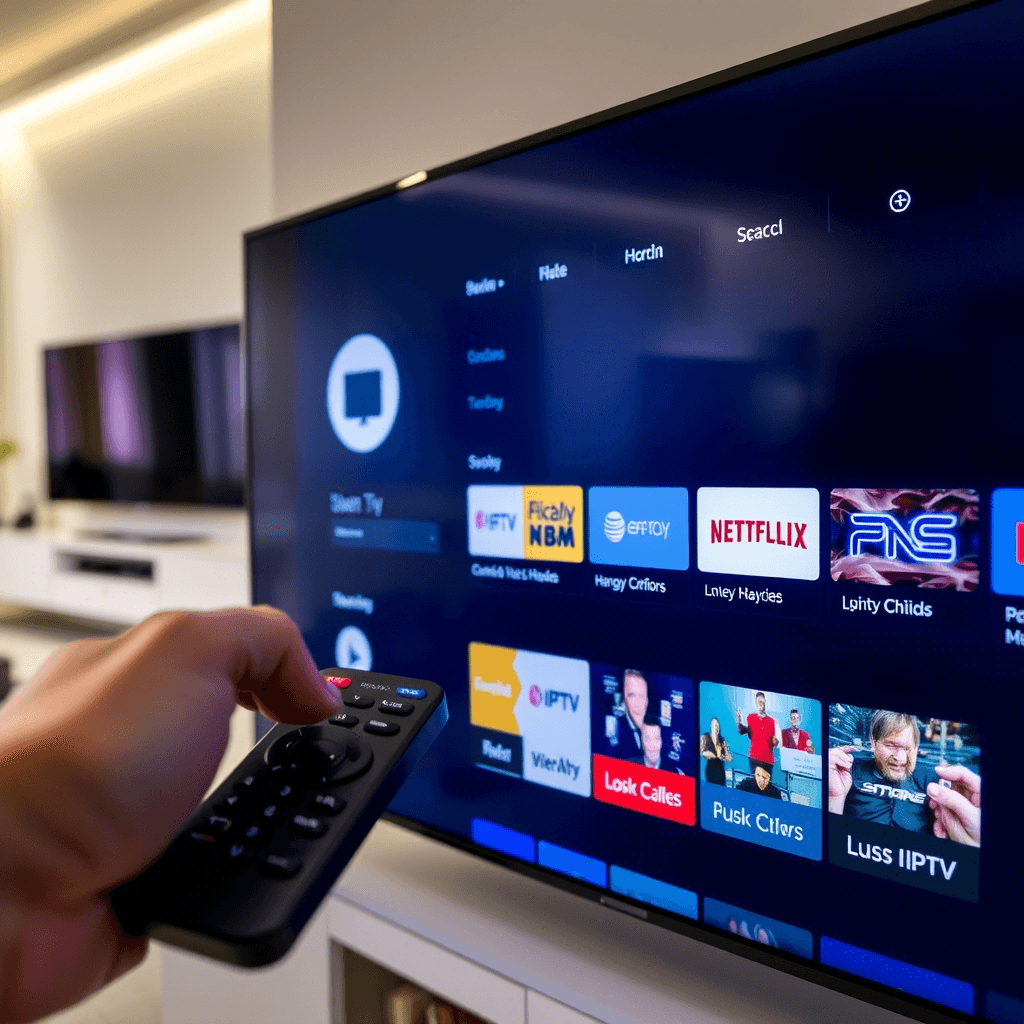
1. 5G and Wi-Fi 6: Speed That Changes the Game
With the rollout of 5G and Wi-Fi 6 in the 2020s, IPTV gained access to blazing-fast data speeds (up to 10 Gbps) and ultra-low latency (under 1 ms). These breakthroughs helped eliminate long-standing streaming challenges.
Advantages:
- Stable 8K Streaming: Even at 7680×4320 resolution, video plays smoothly with zero buffering.
- Mobile Streaming: High-speed access on the go — even in subways or on trains.
- Cloud Gaming: Services like Xbox Cloud Gaming and GeForce NOW use 5G to stream games without the need for high-end PCs.
Examples:
- In 2021, Verizon launched 5G Edge, a service that speeds up content delivery for both IPTV and gaming.
- Wi-Fi 6E (an extension of Wi-Fi 6) reduces latency for smart TVs and VR headsets.
2. Artificial Intelligence: Personalization and Hyperlocal Content
AI has become the beating heart of modern IPTV, unlocking a new era of personalized and localized viewing.
Content Personalization:
- Netflix and YouTube use AI to analyze your viewing habits — from genres to watch time — and deliver spot-on recommendations.
- Disney+ builds custom playlists tailored for the whole family using AI.
Hyperlocalization:
- Streaming services now adapt content by region — local news, weather, and ads.
- Amazon Prime Video displays region-specific banners, while Twitch uses AI to translate chat in real time.
AI-Generated Content:
- Runway ML generates video clips from text prompts.
- Synthesia creates videos with virtual presenters who read scripts — no actors needed.
3. AR/VR and the Metaverse: TV Enters a New Dimension
IPTV is pushing beyond flat screens into immersive spaces like augmented reality (AR), virtual reality (VR), and metaverse platforms.
Use Cases:
- VR Broadcasts:
Watch NBA games in virtual stadiums with a front-row experience.
The BBC is piloting VR news reports with anchors inside digital environments. - AR Interactivity:
Apps like Snapchat and Instagram add AR filters to live streams.
Samsung and LG TVs use AR to project products into your living room during commercials. - The Metaverse:
Platforms like Meta Horizon Worlds and Roblox are hosting virtual cinemas and concerts.
Disney is developing HoloTV, where movie characters interact with your environment through AR glasses.
4. Integration with IoT and Smart Devices
Modern IPTV is becoming an integral part of the smart home, interacting with Internet of Things (IoT) devices.
Voice Control:
Use Amazon Alexa or Google Nest to play shows, adjust volume, or switch channels.
Fitness Integration:
Apps like Peloton sync workouts with your heart rate data from smartwatches.
Smart Screens & Glass Panels:
Samsung unveiled The Sero, a vertical TV that rotates for mobile-style viewing.
LG is working on transparent OLEDs that display content over real-world surroundings.
5. Legal and Ethical Challenges
With great power (and bandwidth) comes great responsibility. IPTV’s rapid growth brings new legal and ethical concerns.
Piracy:
Illegal streaming apps like IPTV Smarters Pro bypass DRM and infringe on copyrights.
Companies respond with IP blocks and AI tools to monitor piracy.
Censorship and Fake Content:
Governments in some countries block IPTV content that contradicts local policies.
AI tools (e.g., DeepMind) are being used to detect deepfakes and misinformation.
Privacy Concerns:
Streaming platforms collect detailed viewing data, raising surveillance worries.
Solutions like GDPR in Europe mandate transparency in data collection.
6. Globalization and Local Content: The World on Your Screen
Streaming platforms are investing heavily in localized content to capture international markets.
Netflix:
- Squid Game (South Korea, 2021) became a global sensation with 1.6 billion hours viewed in a month.
- Indian hits (Sacred Games) and Spanish dramas (Money Heist) attract global audiences.
Disney+:
- Its Hotstar version in India offers cricket, Bollywood films, and local shows.
Tencent Video (China):
- Produces web series and documentaries streamed across Southeast Asia.
7. Green Streaming: IPTV’s Eco-Friendly Edge
Digital broadcasting is emerging as a greener alternative to traditional TV.
Energy Efficiency:
- Cloud services like Google Cloud run entirely on renewable energy.
- New codecs (H.266/VVC) cut data size by 50% compared to H.264.
Less Plastic Waste:
- No more DVDs, Blu-rays, or cable boxes — fewer physical materials mean less landfill.
Sustainable Productions:
- Apple TV+ commits to using clean energy on all its film sets.
Conclusion: IPTV in the Age of Digital Realities
IPTV has come a long way — from experimental 1990s streams to the vast media ecosystem of the 2020s. Today, it’s not just a replacement for TV broadcasting — it’s an interactive, personalized, and global platform that’s reshaping how we consume, connect, and create.
Looking forward, IPTV will become even more immersive:
- The metaverse will turn TV into a virtual experience.
- AI will generate real-time content based on your commands.
- Quantum networks may unlock ultra-fast data delivery.
Television is no longer just “a box in the living room” — it’s part of your digital life, blurring the lines between real and virtual worlds.







